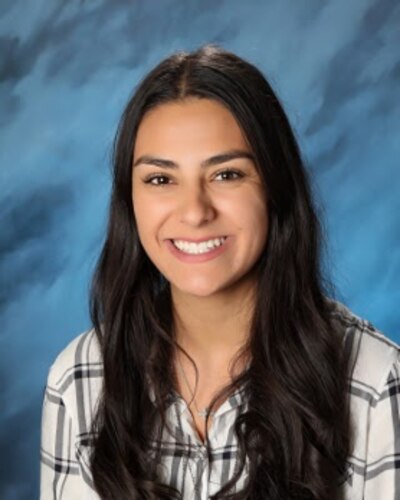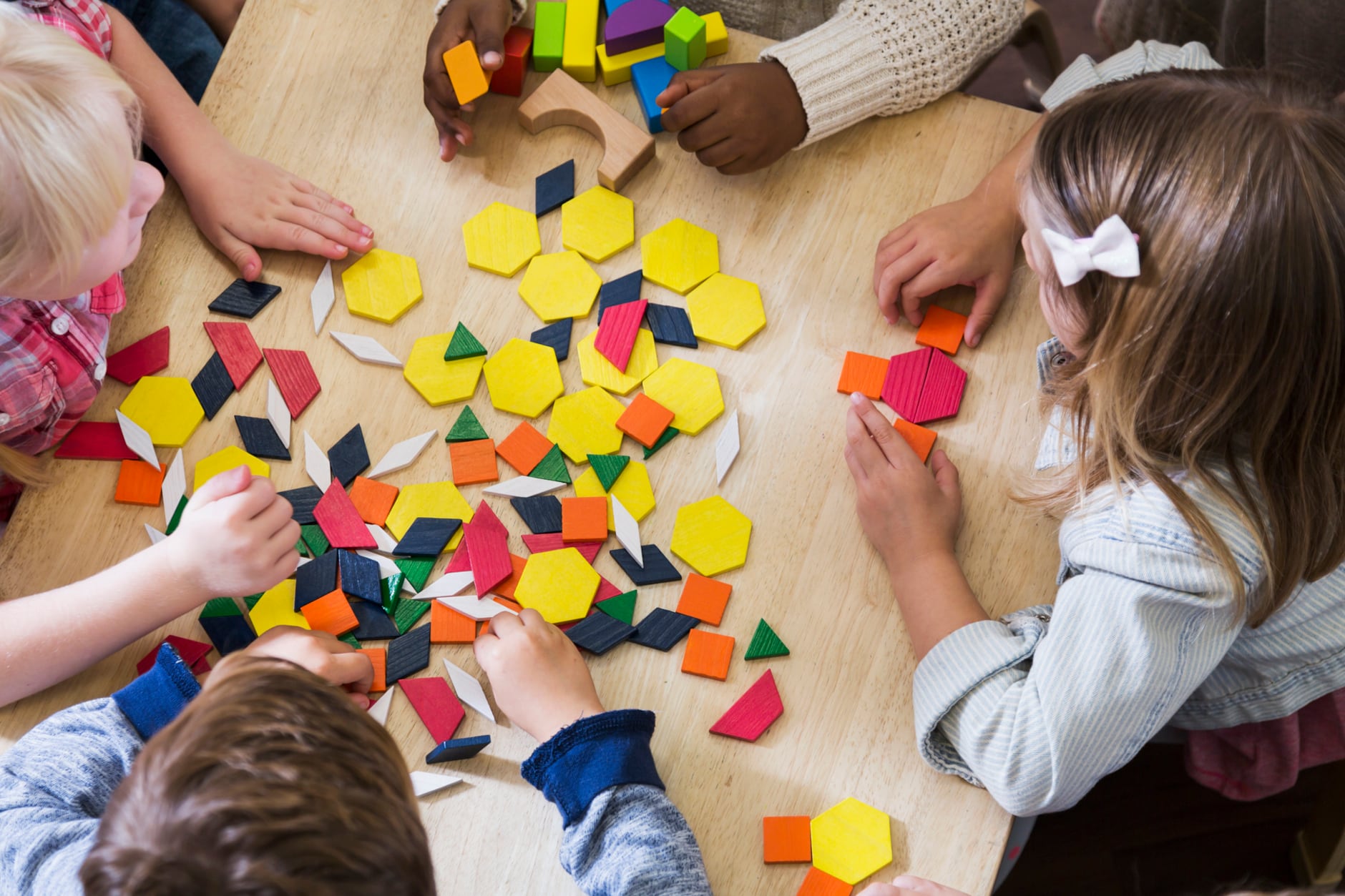Last school year was an exercise in extremes for Emily Trujillo, a first-year kindergarten teacher at Emerald Elementary in Broomfield.
She felt the power of education when she saw her young students tackle tough conversations about gender stereotypes — like who gets to wear nail polish or certain kinds of Halloween costumes. In the spring, when schools shifted to remote learning, she felt helpless and far away.
Today, Trujillo is nervous about the coming school year, but also confident she and her fellow educators can pull it off.
“Our world needs leaders who are willing to go first and the teachers alongside me are the most amazing team of people to link arms with,” she said.

Trujillo, who graduated from the Boulder Valley district where Emerald is located, recently won an early career teaching award from a local foundation, Impact on Education. She talked to Chalkbeat about the life-changing influence of her third grade teacher, her anti-racism reading list, and how she helped a student’s family prepare for an interview with immigration officials.
This interview has been edited for length and clarity.
Was there a moment when you decided to become a teacher?
The moment I decided to become a teacher was in third grade. My teacher at the time, Terri Mulford, was the educator who cared about me and my education. I felt her passion and by her doing her job, I fell in love. Today, Terri is president of Boulder Valley Education Association and my mentor.
How do you get to know your students?
I’ve had great success connecting with students by being authentic. For example, I’ve modeled genuine emotions — feeling excited for a family dinner or nervous for a test. One of the most memorable moments came at the beginning of the year. At the end of the day, a student asked me if I was a kid or a grown-up. I explained how I was young and learning what it meant to live by myself. I used examples of fixing things around my apartment or paying for my own items. I also talked about how I was still like a kid in some ways. Being authentic with students about being young, a new teacher, and learning as I go, created an environment where parents and students could also admit they were learning as they go.
Tell us about a favorite lesson to teach. Where did the idea come from?
One of the most memorable lessons this year was about inclusivity and gender. I began looking for direction after a student’s mother emailed me and said the family members had all painted their nails that night and before bed, her son became upset and no longer wanted to have the nail polish on. After the email, I called to talk to her and asked what I could do.
From there, my team planned 30-minute time blocks in the morning and the afternoon to talk about the content. I received help from a kindergarten paraprofessional, the school librarian, the P.E. teacher, and school counselor. First, we talked about careers. We chose images that reflected our student body in addition to representing both genders in careers.
Next, we read the book “Pink is for Boys” and students challenged it in ways that were powerful. Then, students watched role-playing by teachers. The students were invited to support, change, or empower someone to make a difference. The four teachers (myself included) consisted of both genders and a variety of ethnicities.
One male teacher and one female teacher had nail polish on for these lessons and the students brought up nail polish on the male teacher’s nails. It was powerful to know that the students identified the social stereotypes we were talking about. Gender-specific costumes were also a topic of conversation because the lesson took place before Halloween.
The students also played games where a prompt was given and their goal was to find someone with a different opinion, then listen, respond, and support.
What was the biggest challenge you faced while teaching remotely last spring?
The biggest challenge I faced while teaching remotely was feeling helpless. Helpless for teammates who were struggling, helpless for families who lost their jobs, helpless to know if the content I was providing was useful. Being intentional with families quickly became my main role. Sometimes this meant seeing if their status had changed and if so, how I could support them. However, most often, it felt sad and I felt far away. Seeing families over the computer was wonderful but as soon as the video chat ended, it was oddly quiet.
How are you feeling about going back to the classroom in the fall?
I am nervous about the fall. I believe that humans are resilient and teachers are flexible. I believe the world will get to a point where we are OK. Nonetheless, I am nervous about the unknown, I am nervous about the trauma our students are experiencing, I am nervous about social isolation and academics.
Our world needs leaders who are willing to go first and the teachers alongside me are the most amazing team of people to link arms with. I have faith that together, we can do this school year.
What’s something happening in the community that affects what goes on inside your class?
Kindergarten is some students’ first time learning what is expected at school compared to home. The students I worked with often talked about what was going on in the community and brought it into our class. Those topics included play, toys, meals, and imagination. But they also included breastfeeding, firearms, language, race/ethnicity, skin color, tattoos, piercings, foster/adoptive care, gender identification, and bathroom privacy. I support students in being curious and show them how I learn.
Tell us about a memorable time — good or bad — when contact with a student’s family changed your perspective or approach.
I connected with a student’s family as they were preparing for an immigration test. I offered support to the mother and told her I was a resource if she had questions. I offered moral support, checking in to see how studying was and how her nerves were. I also provided study guides and flashcards — free and downloadable from the website.
However, the most important support was helping provide documentation that excused her son, who has autism and is an English learner, from being interviewed. English communication can be challenging for him and she worried he would say something he didn’t mean and they would lose the opportunity to qualify.
The mother utilized my support and it blew me away because I didn’t know I was even offering much. In the end, the family passed the test and our school team celebrated by sending them a card and gift card, and video chatting during a meal together.
What was the biggest lesson you learned after your first year teaching?
The biggest lesson I learned this year is I need to use my voice. To me, that means I want to engage students in meaningful conversation, including on controversial world events. Teaching is often leading by example. I want to model for children how being kind and respectful has a place in disagreement. I want to use the authenticity I model on a day-to-day basis to create a space for students to wonder and learn more about the world around them. I want to show students their voices and actions matter, and can make a difference.
What are you reading for enjoyment?
The books I am currently reading came from a wonderful teammate who has compiled and shared anti-racism resources with our school. This summer, I have read five of the books on the list so far: “Just Mercy” by Bryan Stevenson; “Me and White Supremacy” by Layla F. Saad, “Raising Our Hands” by Jenna Arnold; “Redefining Realness” by Janet Mock; and “So, You Want to Talk About Race” by Ijeoma Oluo.









